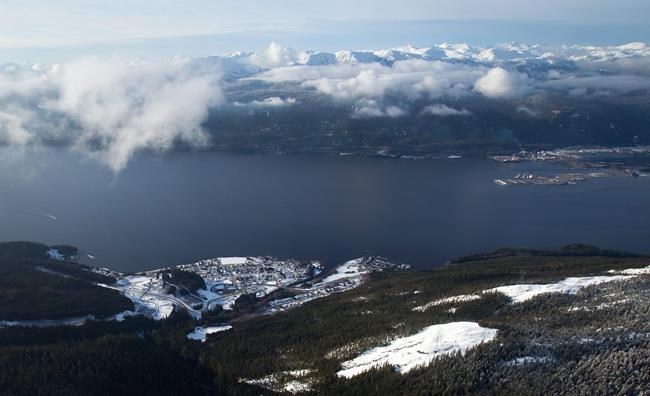CALGARY — The proposed US$3.4-billion Cedar LNG facility is looking more likely to become a reality in the wake of recent positive statements by the project partners.
RBC Capital Markets said Friday it expects Pembina Pipeline Corp. and its partner, the Haisla Nation of B.C., to green light the project with a final investment decision soon.
"We expect a positive final investment decision for the Cedar LNG project will occur assuming there is no deterioration in the project finance market," RBC analyst Robert Kwan wrote in a note to clients.
"Pembina has made progress on a number of key items."
Cedar LNG is a proposed floating liquefied natural gas facility that pipeline company Pembina is planning to build with the Haisla in Kitimat, B.C.
The facility, which would produce LNG for export to Asian markets, would be owned by the Haisla, making it the largest Indigenous-owned infrastructure project in the country.
Pembina announced Thursday that it has signed a long-term natural gas supply agreement for the facility with ARC Resources Ltd., a Calgary-headquartered company that has natural gas drilling operations in the Montney region of northeast B.C. and northwest Alberta.
Under the terms of the agreement, ARC will deliver approximately 200 million cubic feet per day of natural gas for liquefaction to the facility, for a term of 20 years commencing with the start of commercial operations, which are anticipated in the second half of 2028.
Pembina also said Thursday it has issued a formal "notice to proceed" to its contractors for the engineering, procurement and construction of the LNG production unit.
Cedar LNG has already obtained all major regulatory approvals and is advancing an agreement that would connect the floating facility to Coastal GasLink, the TC Energy-owned pipeline that will also carry natural gas to the Shell-led LNG Canada facility.
Construction of LNG Canada near Kitimat nearing completion and it is expected to be the country's first liquefied natural gas export terminal.
Another smaller LNG facility, Woodfibre LNG, has also received regulatory approval for construction near Squamish, B.C.
Pembina said Thursday it expects to make its final investment decision on Cedar LNG by the middle of this year.
The company had previously said a decision could be made before the end of the first quarter, with onshore construction work starting as soon as the second quarter of this year. But it later deferred its decision, saying ongoing negotiations for natural gas supply, as well as the obtaining of certain third-party agreements and project financing, must first be resolved.
Proponents of a Canadian LNG industry say liquefied natural gas from Canada could help reduce global greenhouse gas emissions by replacing coal in countries that still rely on the dirtier fuel.
But environmentalists argue that LNG creates its own emissions through the liquefaction and transportation process, as well as through the drilling and flaring of natural gas in Western Canada.
They argue that building massive LNG terminals that require huge upfront capital investments "locks in" future greenhouse gas emissions at a time when the world needs to be planning for a lower-carbon future.
The capital cost of Cedar LNG was originally estimated at US$2.4 billion, but Pembina said Thursday it now estimates capital costs at US$3.4 billion.
This report by The Canadian Press was first published April 5, 2024.
Companies in this story: (TSX:PPL; TSX:ARX)
Amanda Stephenson, The Canadian Press




